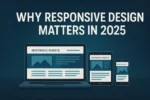Unlocking Creativity: Essential Skills Every Graphic Designer Needs Today

Graphic design is more than just making things look “pretty.” It’s the art of visual communication—a blend of creativity, strategy, and technical know-how that brings ideas to life. Whether you’re dreaming of designing sleek brand identities, eye-catching social media graphics, or immersive web interfaces, one question stands out: What skills are needed to be a graphic designer?
Let’s break it down into the must-have skills that set successful designers apart in today’s competitive, ever-evolving creative industry.
Creative Thinking & Imagination
At the heart of graphic design is creativity. You don’t just follow trends—you interpret and reinvent them. From generating fresh concepts to solving visual problems, creative thinking allows designers to stand out and craft original, meaningful work. It’s not about being a “natural-born artist”—it’s about being open to new ideas and looking at challenges from different angles.
Pro tip: Inspiration can come from anywhere—nature, architecture, books, or even everyday life. Keep a sketchbook or digital mood board handy to capture spontaneous ideas.
Mastery of Design Software
Tools don’t make the designer—but they sure help. Graphic designers should be comfortable using industry-standard software like:
- Adobe Photoshop – for photo editing and digital art.
- Adobe Illustrator – ideal for logo and vector design.
- Adobe InDesign – perfect for layout-heavy work like brochures and magazines.
- Figma or Adobe XD – for UI/UX design and prototyping.
Knowing your tools inside out allows you to bring concepts to life efficiently and professionally.
Strong Understanding of Typography
Typography isn’t just picking pretty fonts. It’s the backbone of visual communication. Designers need to understand font pairing, hierarchy, spacing, and legibility to create designs that are both beautiful and functional.
When used correctly, typography can evoke emotion, guide readers, and reinforce brand identity.
Knowledge of Color Theory
Color sets the mood, draws attention, and communicates messages without saying a word. Understanding how colors work together (or clash), how to create harmony, and how to use contrast effectively is essential.
Every color choice should have a purpose—whether it’s boosting readability or sparking an emotional response.
Attention to Detail
Design is in the details. Whether it’s aligning elements perfectly, spacing text evenly, or making sure colors match across platforms—attention to detail separates good designers from great ones.
A single misplaced element can throw off an entire composition. Precision matters.
Communication & Collaboration Skills
Design is rarely a solo journey. You’ll work with clients, art directors, marketers, or developers. Being able to listen, take feedback, and clearly explain your design decisions is crucial.
Remember: Good communication leads to fewer revisions and stronger relationships.
Problem-Solving Ability
Design solves problems. Whether it’s helping a startup look more professional or improving a website’s user experience, the goal is always to find effective visual solutions. Designers must be both analytical and creative—able to dissect a brief and approach it with intention.
Time Management & Organization
Deadlines are real—and they don’t move. Graphic designers often juggle multiple projects at once. Being organized, setting priorities, and managing your time effectively ensures you stay productive and deliver quality work, on time.
Bonus: Project management tools like Trello, Asana, or Notion can help keep your workflow on track.
A Growth Mindset & Willingness to Learn
Design trends, software, and client expectations evolve constantly. Great designers never stop learning. Whether it’s watching a tutorial, attending a webinar, or exploring new design styles, staying curious keeps your skills sharp and your portfolio relevant.
Wrapping Up
So, what skills are needed to be a graphic designer? It’s a mix of creativity, technical ability, communication, and a passion for continuous learning. You don’t need to master everything at once—every great designer starts somewhere. Focus on building your core skills, keep creating, and stay open to growth.
Because at the end of the day, great design isn’t just what it looks like—it’s how it works.




